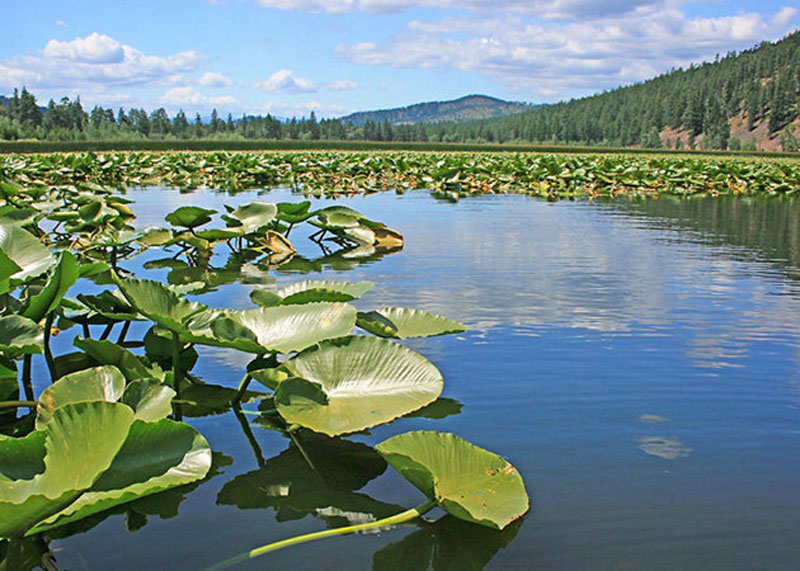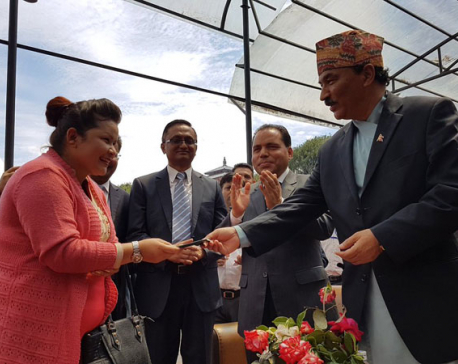
OR
Freshwater Ecosystem

More from Author
Destruction of freshwater ecosystem has led to as much as 81 percent decline in population of some species
Freshwater ecosystem including both lentic (still water) and lotic (flowing water) are critical habitats for many species. Occupying only 0.8 percent of earth surface, freshwater habitats support 10 percent of all known species and are hotspots for biodiversity. They provide numerous goods and services to mankind as well.
Freshwaters provide clean water and supports vegetation and wildlife. They also prevent and regulate flooding and sedimentation and help with nutrition retention. Likewise, they are excellent sites for religious and cultural tourism from which country like Nepal can generate huge revenues.
Despite being invaluable, conservation of freshwater ecosystem is often ignored in Nepal. As a result, gradual destruction of freshwater ecosystem has led to declining species population, by as much as 81 percent between 1970 and 2012.
One reason behind degradation of freshwater ecosystem is ignorance of its significance and our haphazard infrastructure planning. Although investments in water resource infrastructures are essential for economic development of the country, it is equally important to ensure that big infrastructures like dams for hydropower and irrigation and roads that go through fragile hills and mountains do not hamper freshwater ecosystem. If these development projects are poorly planned, the livelihoods of river-dependent communities living in the downstream can also be affected.
To conserve freshwater ecosystem, environmental flow (eflow) assessment identifies the right quality, quantity and timing of water flows in the downstream of the dam. Clause 6.1.1 of Nepal Hydropower Development Policy 2001 states that hydropower operators must release at least 10 percent of minimum monthly average discharge of the river as eflow. But if environmental impact assessment (EIA) identifies higher quantum, the operator is obliged to release more water downstream.
Although some argue that 10 percent flow is inadequate to conserve freshwater biodiversity, most hydropower operators are not releasing even 10 percent.
WWF Nepal in coordination with Kathmandu University has been assessing eflow, incorporating all the important dimensions of freshwater ecosystem in Gandaki River. With the results expected in July 2017, WWF hopes to convey the significance of incorporating flows in national water resources policies and guidelines and encourage the same while developing water-related infrastructures.
In the context of climate change, changing river flow and Nepal moving to a federal state, focus on eflow is even more important to prevent disputes over water resources among upper- and lower-riparian federal states. Conflicts due to water resources are inevitable if the government is not pro-active in river basin planning and management.
Or else Nepal will face the same problems India does today, in terms of inter-states water disputes; such as the dispute between Maharastra and Andhra Pradesh over Godavari river, or the dispute between Tamil Nadu and Karnataka over Cauvery river.
Though maintaining eflow is basic requirement for conserving freshwater ecosystem, construction of friendly passes for migratory aquatic species is important too. No dam in Nepal provides enough aquatic species-friendly passage for migratory species, ultimately fragmenting large populations into small populace that are unviable. For instance, Gharial that is released from Chitwan over a dam cannot return upstream, essentially letting them off to India.
Not only Gharial but Dolphin, Mahseer and other fish species are also adversely affected by not having a proper fish passage or bypass channel while constructing dams. Section 5B of 1st amendment of Aquatic Animal Protection Act-1960 argues for the construction of fish ladder when building dykes for electricity, water supply and irrigation. But implementation is limited.
A recent practice in farming seen in the floodplain of Mohana River may help with the livelihood of some people but have detrimental effect on many freshwater species.
Identifying high value river stretches and designating some rivers as ‘free-flowing’ or ‘wild’ is another promising option. The United States, Canada, Australia and India have already started designating rivers for protection. Interestingly, Whanganui River in New Zealand has been granted same legal rights as a human being.
Considering the new water infrastructures in Nepal that can alter water flows in rivers irreversibly, it is high time to work to identify and designate free-flowing and wild rivers so that at least a few rivers and river stretches can be dedicated to conserving aquatic biodiversity and recreational use.
Implementing these concepts is challenging especially due to the absence of responsible government body for freshwater ecosystem conservation. There are several ministries with strong stakes in water, but their focus is on water use rather than conservation. Unfortunately, the only apex body to deal with water-related issue, the Water and Energy Commission Secretariat (WECS), lacks a clear-cut mandate and legal backstopping to implement interventions.
If freshwater ecosystems are constantly under-emphasized, the economic, environmental, and socio-cultural losses due to degradation of freshwater resources will be enormous and hard to reverse.
There is a need for a responsible body with legal mandate to work on freshwater ecosystem conservation. Unless there is a strong and bold decision, freshwater ecosystem will continue to degrade at an alarming rate.
As a leading conservation organization, WWF Nepal has been working on conservation of RAMSAR sites and other freshwater ecosystems with river-basin approach. Currently, it has prepared freshwater program strategic plan for 2017-2021 with a goal of maintaining freshwater ecosystem integrity to sustain human and nature.
To achieve this, the agency has prioritized three major interventions: a) conservation and restoration of freshwater habitats and species, and enhancement of related ecosystem services, b) improvement of water governance and c) creation of enabling environment for policy formulation, revision and implementation for integrated river basin management and freshwater ecosystem conservation. These activities will not see the light of the day without the support of the government, our development partners and local communities.
The author is Water Resources Specialist, Freshwater Program, WWF Nepal
You May Like This

20,000 trees of neglect
Here is a serious reason to worry. The price of timber in the local market is going all time high. ... Read More...

Costly passports
The Nepalis working in Gulf countries still face great difficulties in obtaining passports via Nepali missions ... Read More...

CIAA hurdle could prove costly: NT official
KATHMANDU, June 10: ‘BSNL-like situation if expansion plans delayed further’ Nepal Telecom (NT) is now in the same situation... Read More...








Just In
- Govt receives 1,658 proposals for startup loans; Minimum of 50 points required for eligibility
- Unified Socialist leader Sodari appointed Sudurpaschim CM
- One Nepali dies in UAE flood
- Madhesh Province CM Yadav expands cabinet
- 12-hour OPD service at Damauli Hospital from Thursday
- Lawmaker Dr Sharma provides Rs 2 million to children's hospital
- BFIs' lending to private sector increases by only 4.3 percent to Rs 5.087 trillion in first eight months of current FY
- NEPSE nosedives 19.56 points; daily turnover falls to Rs 2.09 billion












Leave A Comment